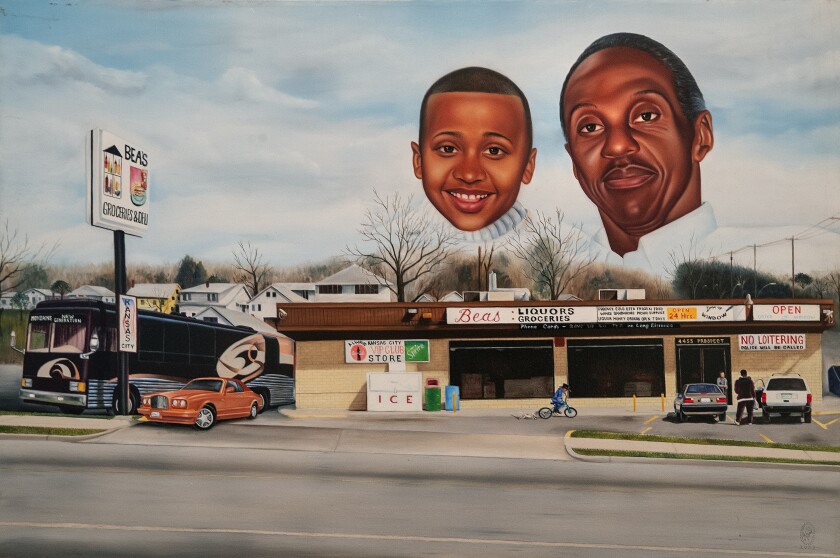Good morning, and welcome to the Essential California newsletter. It’s Wednesday, Jan. 27, and I’m writing from Los Angeles.
California appears to have pushed through the worst of its calamitous winter surge, with coronavirus case counts and hospitalization numbers now on the decline. However, while it’s clear that Californians have managed to bend the curve, we are far from in the clear.
The pandemic has also brutally battered the state economy, with the unemployment rate spiking in December. Much of that job loss was concentrated in the leisure and hospitality sector, which has been hit particularly hard by stay-at-home orders. Gov. Gavin Newsom’s decision to lift the stay-at-home order could hasten the state’s economic recovery, but at what cost?
[See also: “With survival at stake, L.A. restaurants rush to reopen, pray the roller coaster ride is over” in the Los Angeles Times]
In a new story, my colleagues Taryn Luna, Soumya Karlamangla, Ron Lin and Hannah Fry explore the high risks, along with the potential economic rewards, of reopening. Newsom’s decision to lift the stay-at-home order “represents a gamble that California can avoid another deadly coronavirus surge in the coming months,” as they put it.
So what do public health experts have to say about the decision? My colleagues spoke to several epidemiologists, and their reactions varied.
[Read the story: “Newsom’s abrupt COVID-19 reopening brings high risks for California, but also potential economic rewards” in the Los Angeles Times]
UC Berkeley epidemiologist Dr. John Swartzberg told my colleagues that he feared lifting the stay-at-home order was “premature” because the cases, while declining, remain very high. He said it might make more sense to wait a few weeks until cases go down further and California can begin reopening with a lower baseline. As he noted, each of California’s surges have been bigger than the next because case numbers weren’t brought to a low level prior to reopening.
But UC San Francisco epidemiologist Dr. Kirsten Bibbins-Domingo said lifting the order can work if the public — and businesses — follow the rules and show intense caution. “Everything hinges on the behaviors we adopt,” Bibbins-Domingo told them.
Epidemiologists also said it’s essential that health officials keep focused on at least two mutant strains of the coronavirus in California, which add a new level of uncertainty to fighting the virus.
Basically, as Soumya summed it up on Twitter, “the lifting of the orders struck experts as a little premature, but not necessarily bad. There is a way to thread this needle and reopen more businesses without leading to a surge, but it requires the kind of messaging California has failed at so far.”
(If you do not already follow Soumya on Twitter, I highly recommend it — her feed is a constant stream of deeply informed commentary and updates on all things coronavirus.)
Tuesday also brought new developments on the vaccine front. President Biden announced that his administration is planning to purchase 200 million more doses of the COVID-19 vaccine, ramping up its effort to quickly inoculate more Americans. Under the plan, 10 million doses would be distributed each week for the next three weeks, up from the current 8.6 million.
And here in California, Gov. Newsom’s recent announcement that the state would shift vaccine priority to an age-based eligibility structure has sparked concerns from groups representing some essential workers and disabled people who may now have to wait longer to get vaccinated, as my colleague Colleen Shalby reports.
[See also: “What the changes in the California COVID-19 vaccine priority list mean for you” in the Los Angeles Times]
Residents of Los Angeles and San Diego counties can now check their eligibilityto receive a vaccine and schedule appointments through a state-run portal.
And now, here’s what’s happening across California:
Note: Some of the sites we link to may limit the number of stories you can access without subscribing.
L.A. STORIES
How a Compton artist’s lost prison painting found its way to the Hammer Museum: Fulton Leroy Washington, a.k.a. Mr. Wash, taught himself to paint while serving a life sentence in prison for nonviolent drug offenses he said he did not commit. Los Angeles Times

The original version of “Mondaine’s Market,” 2005, on display at the Hammer Museum as part of “Made in L.A. 2020: a version.” (Mel Melcon/Los Angeles Times)
Los Angeles City Councilman Kevin de León struggled to recite the Pledge of Allegiance during Tuesday’s meeting, drawing a whole lot of commentary on Twitter. “I wish all of city council’s failures were this funny and inconsequential,” wrote one activist. Los Angeles Times
IMMIGRATION AND THE BORDER
“Zero tolerance” immigration rule rescinded: On Tuesday, the Justice Department rescinded a Trump-era memo that established a “zero tolerance” enforcement policy for migrants crossing the U.S.-Mexico border illegally, which resulted in thousands of family separations. Associated Press
POLITICS AND GOVERNMENT
Senate Republicans overwhelmingly backed an effort to declare a Trump impeachment trial illegal: Forty-five Senate Republicans supported a resolution by Sen. Rand Paul that said the trial is unconstitutional because Trump is a private citizen and no longer president. Los Angeles Times
Poor planning and ineffective management left California’s unemployment agency unprepared to help workers left jobless by the COVID-19 pandemic, and the agency failed to address problems in its system that were known for nearly a decade, according to an emergency state audit released Tuesday. Los Angeles Times
California’s K-12 public-school enrollment has precipitously declined during the pandemic, according to new state projections.


No comments:
Post a Comment